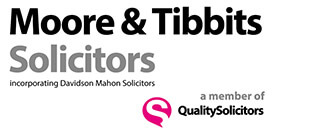There is a relatively new approach for divorcing couples to resolve disputes surrounding their separation without the need to go to court. This new approach is known as the collaborative law process and its fundamental premise is that no one may go to court as part of the process. Each person appoints their own collaboratively trained lawyer and at the start of the process a participation agreement is signed which binds the couple to the process and disqualifies their respective lawyers from further involvement if the matter goes to court.
Initially started in the USA in the 1980s where the process was regarded as “revolutionary”, it has finally made its way across to our shores where it, along with other alternative dispute resolution (ADR) methods, is increasingly becoming more popular. When the divorcing couple sign the participation agreement, they not only commit themselves to not go to court but to identify and address the interests and concerns of all the family, not just their own.
The participation agreement carefully includes clauses that encourage mutual respect and a promise to take a problem solving approach. It encourages openness and honesty and places an emphasis on the needs of the children. To help facilitate this process the couple’s divorce team is often widened to include a financial adviser, accountant, child expert or mental health counsellor/life coach, all working together to assist the couple in a holistic approach. The collaborative process recognises that emotional issues exist that cannot be addressed by following the direct legal system. The couple at the onset of the collaborative law process also share with each other what are known as anchor statements which detail why they have chosen to use this approach to resolve their divorce dispute. The anchor statements are referred to throughout the process to help shift any deadlock and at the end to see whether the process has achieved the couple’s aims.
The actual collaborative process occurs in four-way meetings with the couple, their lawyers and any other necessary consultant. Depending on the nature of issues to be resolved, the number and duration of meetings can vary. The couple help to set the agenda and any more pressing issues can replace the scheduled issues at any time. The couple also sets the pace of the meetings and their frequency, although it is usually the aim for four-way meetings to follow each other closely so issues can be resolved quickly. On average a series of 3-4 four-way meetings will be sufficient. The agreement the couple ultimately achieves will then be documented and lodged with the court for it to be approved.
In general the collaborative law process is regarded as a more respectful way to resolve divorce disputes as neither of the couple is aimed at destroying the other. The process achieves a swifter settlement than going through the court and is a cheaper option for couples. The couple also have the advantage of resolving their issues without the underlying threat of contested litigation. The collaborative process has a higher success rate and is often referred to as the “nice divorce”, so if you know anyone who will benefit from this process, get them to give our Family Department a call.
